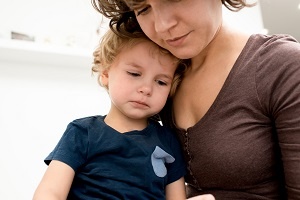Septicaemia (or blood poisoning) is a serious infection that can lead to sepsis, which is potentially life-threatening. Here we discuss what it is, the symptoms and treatment.
What is septicaemia?
Septicaemia, sometimes described as blood poisoning, is caused by bacteria invading the bloodstream due to an infection (NHS Inform, 2021a). The most common ways for the infection to enter the body is through the lungs, urinary tract, abdomen or pelvis (NHS Inform, 2021a).
Sepsis can occur as a result of septicaemia, when a person's immune system over-reacts to an infection in the body (NHS, 2019). It can be caused by viral or fungal infections (NHS Inform, 2021a). Sepsis can be life-threatening as the immune system can damage the body's own tissues or organs as it reacts to the infection (NHS, 2019).
Who is at risk from septicaemia and sepsis?
It is possible that anyone could contract sepsis from a minor infection but certain people are more vulnerable.
- Anyone with a weakened immune system due to illness or medical treatments.
- Babies under one year old.
- People over 75.
- Anyone who is pregnant or just given birth (for more information see our page here).
- Anyone with a long-term health condition.
- Anyone who has recently had surgery or spent time in hospital
(NHS Inform, 2021a; NHS 2019).
Some research from America has found that there is a higher incidence of sepsis in African-Americans (Barnato et al, 2007). The researchers identified social and economic reasons for this higher level, but did not rule out a possible genetic factor.
Can sepsis be prevented?
You cannot catch sepsis from another person, and there are things you can do to lessen the likelihood of infections that could lead to sepsis.
- Keep up to date with vaccinations.
- Clean and care for wounds.
- Follow the instructions when taking antibiotics.
- Wash your hands regularly
(NHS, 2019)
What are the symptoms of septicaemia and sepsis?
It can be hard to spot symptoms, particularly in a baby, so if you are unsure if it is serious call 111 for advice.
Early symptoms may be similar to those of a milder illness. Trust your instincts and seek medical help repeatedly if symptoms develop or worsen (Meningitis Research Foundation, 2019; NICE, 2017). If you think someone is suffering from sepsis, call an ambulance or go to the emergency department (NHS, 2019).
As the immune system attempts to fight the infection it can cause the following symptoms in a child or adult:
- Mottled, blueish or pale skin, lips or tongue.
- A rash that does not fade when you press a glass to it. It may look like pinprick spots on the skin or large purple areas. A rash may be harder to spot on dark skin but may be visible on paler areas such as the soles of the feet, palms, palms of the hands, the inside of the mouth or eyelids.
- Rapid, shallow breathing.
- A high temperature.
- Feeling faint, dizzy or confused.
- Chills or shivering, or cold-feeling hands and feet.
For babies there may be additional symptoms. Call 999 or go to A&E if a baby or young child has any of these symptoms of sepsis:
- Blue, pale or blotchy skin, lips or tongue.
- A rash that does not fade when you roll a glass over it.
- Difficulty breathing (you may notice grunting noises or their stomach sucking under their ribcage), breathlessness or breathing very fast.
- A weak, high-pitched cry that's not like their normal cry.
- Not responding like they normally do, or not interested in feeding or normal activities.
- Being sleepier than normal or difficult to wake.
(NHS Inform, 2021a; NHS, 2019; Meningitis Research Foundation, 2019)
If your child has ANY of the symptoms as follows, then seek urgent medical advice from NHS 111:
- A high temperature of above 38˚C for babies under three months and 39˚C from three to six months, or any high temperature if your child is showing no interest in anything.
- A low temperature of under 36˚C when checked three times during 10 minutes.
- They're having trouble breathing, making grunting noises, are unable to say more than a few words when they normally talk more, or have pauses in their breathing.
- They haven't had a wee for 12 hours.
- They haven't fed for more than eight hours despite being awake, or if your baby is under one month old and is disinterested in feeding.
- They're being sick with green, bloody or black vomit.
- Your baby's soft spot is bulging. You can find this on the front of the head above the hairline.
- Their eyes seem sunken.
- They're disinterested in everything, or they're not responding or they're irritable.
- They're weak, floppy, whining or crying continuously.
- They have a stiff neck, particularly when they look up and down.
(NHS Inform, 2021a)
How is septicaemia and sepsis treated?
If septicaemia is diagnosed early and it hasn’t affected any internal organs, it can be treated with oral antibiotics (NHS Inform, 2021).
Almost everyone who contracts sepsis will need treatment in hospital to receive intravenous antibiotics, and some will need admission to intensive care. If it is severe, mechanical support to breathe (on a ventilator) may be required, or surgery to remove areas of infection (NHS Inform, 2021a; NHS, 2019).
Most people make a full recovery from sepsis but it may take time. Some people have physical or emotional symptoms for years (NHS, 2019). The Sepsis Trust can offer support with Post Sepsis Syndrome.
What is septic shock?
Sepsis is a reaction by the body to severe infection causing it to attack it's own tissues and organs, creating inflammation. As the infection progresses it also causes damage to blood vessels in the body, making it harder to move the blood around. This causes a severe drop in blood pressure, reducing the blood supply to the vital organs (NHS Inform, 2021b; Royal College of Nursing, 2021).
Septic shock can be treated but it is a very serious condition that can lead to death if not treated promptly.
The glass test
If you find a blotchy rash that does not fade when you press a glass firmly over it, this is a typical symptom of meningitis or sepsis. Yet this symptom doesn't always develop (Meningitis Research Foundation, 2019).
The rash often starts off looking like small, red pinpricks. You may then see it spread quickly and turn into red or purple blotches. A non-fading rash seen under a clear glass firmly pressed against the skin is an early sign of sepsis and meningitis (Meningitis Research Foundation, 2019).
On dark skin, look for the rash on paler areas of skin such as the soles of the feet, palms of the hands, the inside of the mouth or eyelids.
You must get medical advice for your child immediately if you find this rash on them.
This page was last reviewed in January 2022.
Further information
Our support line offers practical and emotional support with feeding your baby and general enquiries for parents, members and volunteers: 0300 330 0700.
You might find attending one of our NCT New Baby courses helpful as they give you the opportunity to explore different approaches to important parenting issues with a qualified group leader and other new parents in your area.
Make friends with other parents-to-be and new parents in your local area for support and friendship by seeing what NCT activities are happening nearby.
Trust your instincts. Meningitis, septicaemia and sepsis are medical emergencies. Call 999 for an ambulance or go to your nearest accident and emergency (A&E) department if you think you or your child might be seriously ill.
NHS has more information on meningitis, complications of meningitis and sepsis.
The UK Sepsis Trust has a website here.
Barnato A, Alexander S, Linde-Zwirble W, Angus D. (2007) Racial Variation in the Incidence, Care, and Outcomes of Severe Sepsis. Analysis of Population, Patient, and Hospital Characteristics Available at: https://www.ncbi.nlm.nih.gov/pmc/articles/PMC2720103/ [Accessed 13th January 2022].
Meningitis Research Foundation (2019) Meningococcal Meningitis and Sepsis: Guidance Notes Diagnosis and Treatment in General Practice Available at: https://www.meningitis.org/getmedia/cf777153-9427-4464-89e2-fb58199174b6/gp_booklet-UK-sept-16 [Accessed14th January 2022].
NHS (2019) Sepsis. Available at: https://www.nhs.uk/conditions/sepsis/ [accessed 13th January 2022].
NHS Inform (2021a) Sepsis. Available at: https://www.nhsinform.scot/illnesses-and-conditions/blood-and-lymph/sepsis [Accessed 13th January 2022].
NHS Inform (2021b) Septic – Shock Available at: https://www.nhsinform.scot/illnesses-and-conditions/blood-and-lymph/septic-shock [Accessed 13th January 2022].
NICE (2017) Sepsis: recognition, diagnosis and early management Available at: https://www.nice.org.uk/guidance/ng51/ifp/chapter/What-if-Im-still-worried [Accessed 13th January 2022].
Royal College of Nursing (2021) Sepsis. Available at https://www.rcn.org.uk/clinical-topics/infection-prevention-and-control/sepsis [Accessed 13th January 2022].








